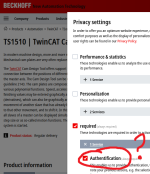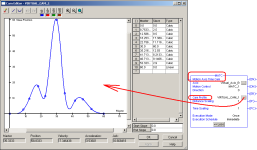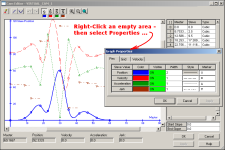drbitboy
Lifetime Supporting Member
Newbie question here, from reading the term in multiple threads.
I have looked at a couple of manuals that discuss "cam" but do not explicitly define the term.
It seems to be a "motion profile*" that ties an input "axis" to an output "axis."
My guess is that, in PLCs for example, the term comes from the concept of a digital object representing a physical analog cam (like the valve cam in an ICE), where the actual shape (profile) of the cam converts rotation (position angle; the input "axis") of the cam's shaft to linear displacement (output "axis") from the shaft's rotational axis.
So while the cam input and output are each called an axis and usually tied to motion control, they are really just two numbers in a non-linear relationship - well, it could be linear, or even piecewise linear, but then a cam would be unnecessary as simpler approaches like scaling instructions could do the job.
So for example the recent thread about a camera taking an image of a package label when the package is at a specific point during twenty inches of travel, or another recent thread filling a bag via a material feeder motor where the bag weight crossings of near-full specific values trigger slower motor speeds, could both, theoretically, use a "cam" (MAOC strobe?) instruction.
Those applications would be overkill, and the cam is instead designed for motion control where two pieces of a process move at different velocities and positions some of the time but need to be at the same velocity and position at specific times e.g. a device gluing a label onto a box on a moving conveyor, which is where cam features like splines would come into play.
Am I close?
* whatever that means
I have looked at a couple of manuals that discuss "cam" but do not explicitly define the term.
It seems to be a "motion profile*" that ties an input "axis" to an output "axis."
My guess is that, in PLCs for example, the term comes from the concept of a digital object representing a physical analog cam (like the valve cam in an ICE), where the actual shape (profile) of the cam converts rotation (position angle; the input "axis") of the cam's shaft to linear displacement (output "axis") from the shaft's rotational axis.
So while the cam input and output are each called an axis and usually tied to motion control, they are really just two numbers in a non-linear relationship - well, it could be linear, or even piecewise linear, but then a cam would be unnecessary as simpler approaches like scaling instructions could do the job.
So for example the recent thread about a camera taking an image of a package label when the package is at a specific point during twenty inches of travel, or another recent thread filling a bag via a material feeder motor where the bag weight crossings of near-full specific values trigger slower motor speeds, could both, theoretically, use a "cam" (MAOC strobe?) instruction.
Those applications would be overkill, and the cam is instead designed for motion control where two pieces of a process move at different velocities and positions some of the time but need to be at the same velocity and position at specific times e.g. a device gluing a label onto a box on a moving conveyor, which is where cam features like splines would come into play.
Am I close?
* whatever that means
Last edited:







